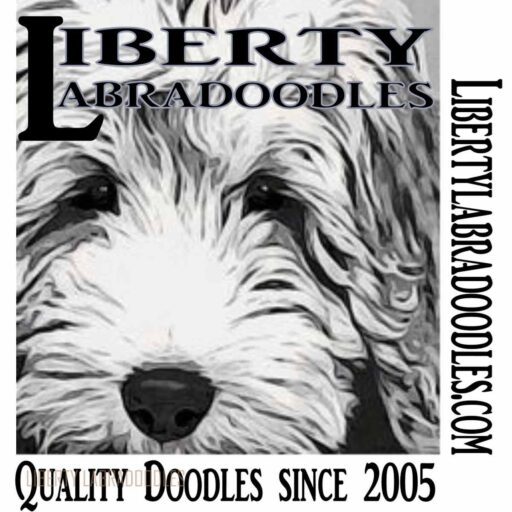Decide on your family’s Core Commands before puppy comes
- Posted on 19th September 2010
- in Featured
- by jvfairbanks
Core Commands
Decide now what your “core commands” will be prior to training your puppy. Nothing is more confusing to a puppy to say here and then come and expect the same results. Decide what is the standard hand signal to go with a command so everyone is consistent.
For puppy owners asking, I list some below we consider core commands for puppies in basic training in no particular order. At a minimum all our puppies should know them and be working on them at home starting at their 10th week. Doing twice daily at 10 minute trainings; focus on one command per couple of days before moving to the next. Praise, Praise, Praise and offer a special reward or treat when executed correctly.
I also offer suggestions on when to use them. We use these commands following the “puppies for dummies” book as we started the commands with Libby at first. Many books and training methods are out there:
- Kennel
- to crate up or go to their “spot”.
- Name
- be positive when using your dogs call name. Use it when you want to make a loving connection at first; allowing trust and your Labradoodle to look to you when the name is called.
- Sit
- when you offer your dog something positive; such as a toy, treat, pat or dinner.
- Wait/Okay
- use wait when you reach a threshold, curb, or stairway.
- release with the okay signal.
- practice this also with food to encourage self control and gentle mouth habits.
- Let’s Go
- when your walking and want to encourage your dog to follow your lead
- Off
- when you want to discourage jumping or get your dog off the furniture.
- Settle
- when you want your dog to quiet down for a time; such as during dinner, homework or watching TV. Some people do this after sit is attained; expecting settle to be returned at sit. We use it even when we have our puppy in our lap and don’t expect a down position or sit to be included.
- Potty
- use this command (or other word of your choice; like business, duty, etc) when you take them to their spot. Right at first, use it right before they potty and praise after. Use it when you head your puppy to their selected spot so they learn to respond gradually on command. We find our dogs even “faking it” as they don’t get to come inside until they complete their command.
- Kisses
- This is a way to encourage introductions. Puppies for dummies starts out with rubbing a cube of butter (not the whole cube, but a couple of passes) on the top of your hand and saying kisses as they lick. This will help also focus them on kissing instead of jumping to great. You encourage kisses instead of gentle mouthing/chewing that puppies love to do to start them off correctly not biting but rather kissing.
- Excuse Me?
- as you walk, you use with attitude when your pup gets in your path (always shuffle through as your the pack leader and don’t go around them). Also use it when your puppy ignores you or leans/pushes on you.
- Stay
- when you want your dog to be still for a period of time; use a serious tone. Don’t introduce as the first command to be learned. This is an “acquired” command for Labradoodles; along with settle.
- Heel
- when you need your dog to walk next to you.
- Down
- don’t confuse this command with off the furniture. We use Down after sit is mastered. It means all 4 on the ground and we expect it to be immediately.
- Leave it
- another one to master after you have some control. Leave it is a must to learn; said with very serious tone. Leave it means just that; use it for poop when tempting to eat when on walks or cords, etc. Mastery is when you can leave a treat and walk by it after stating leave it and they do!
- Stand
- stand is for when you need to groom, bathe, or steady your dog in a crowd. Stand is an easy one to get following the sit command and your groomer will be so impressed.
- Here
- this is a “not an option” command. When you issue it you must have your pup follow through. This is an all or nothing command; expect it to be followed or don’t issue the command. It is a sharp, stern command; usually followed by the puppy name.

